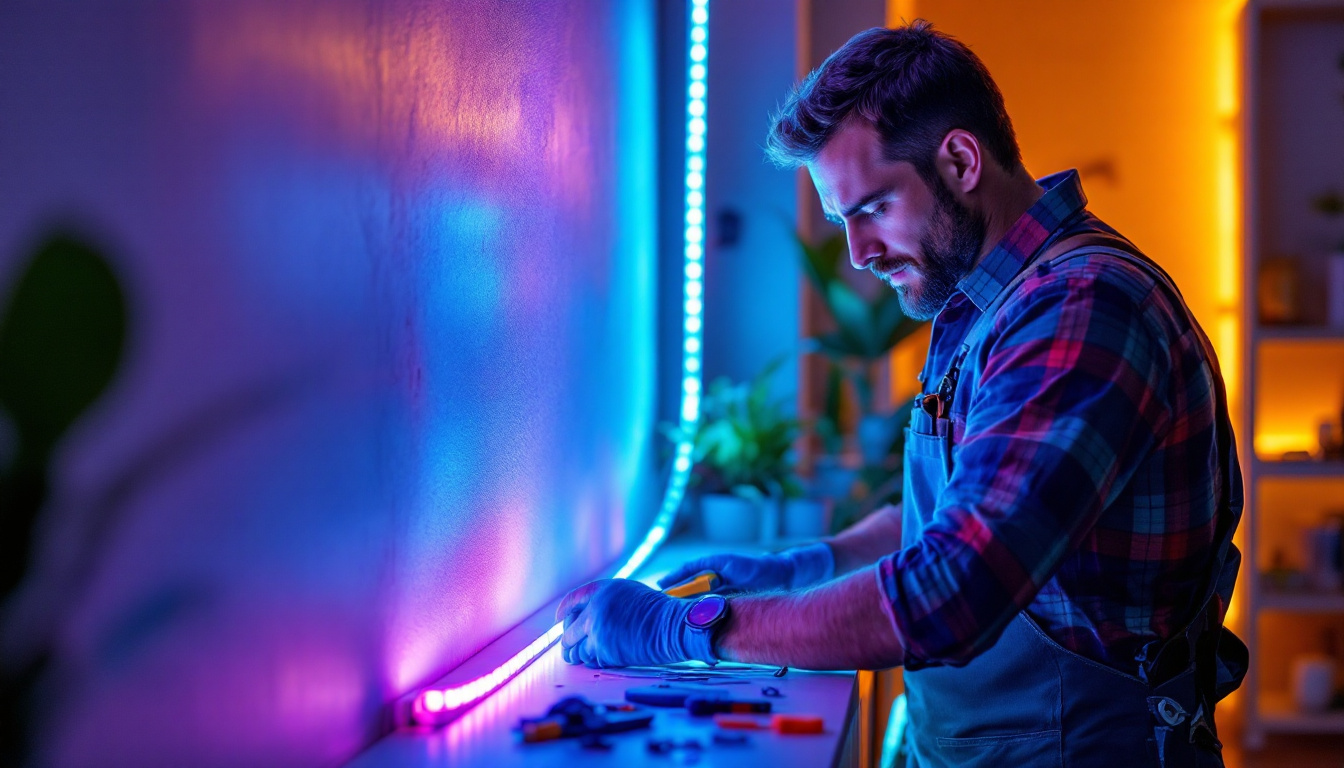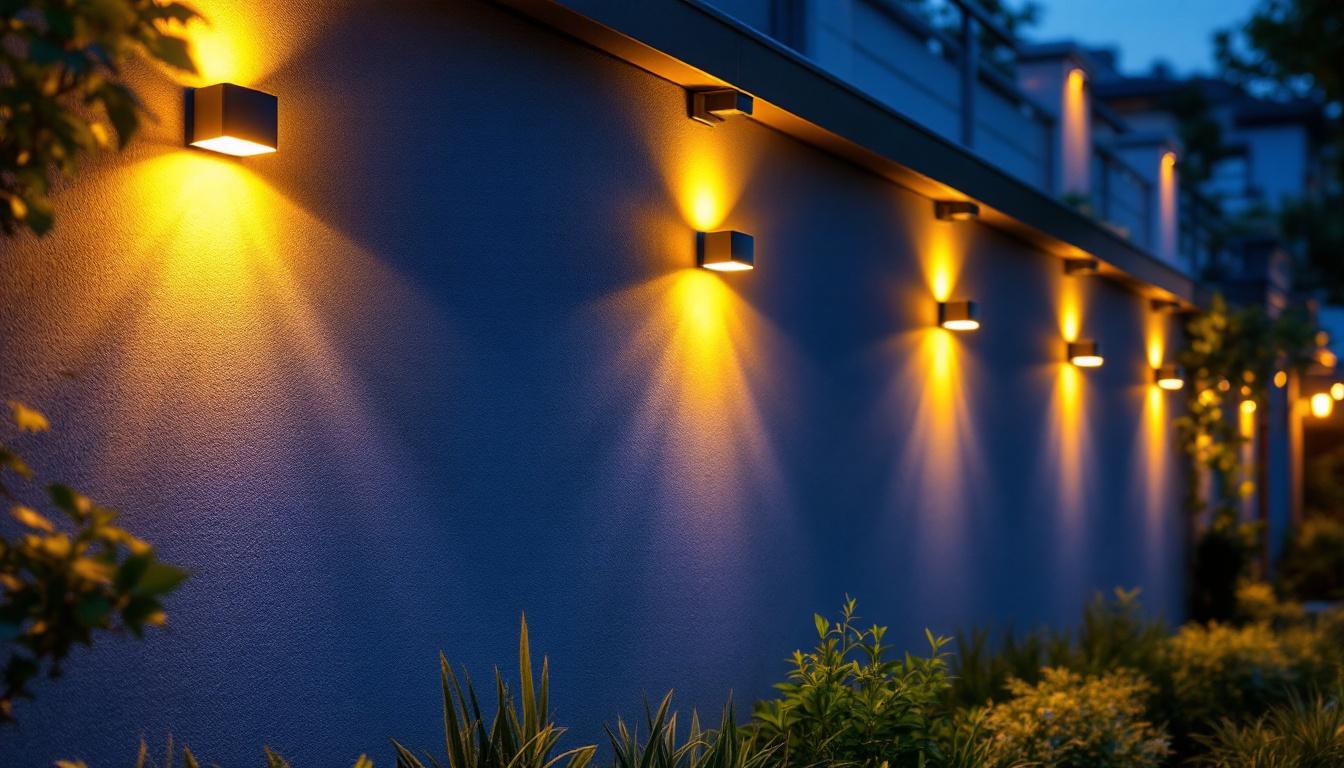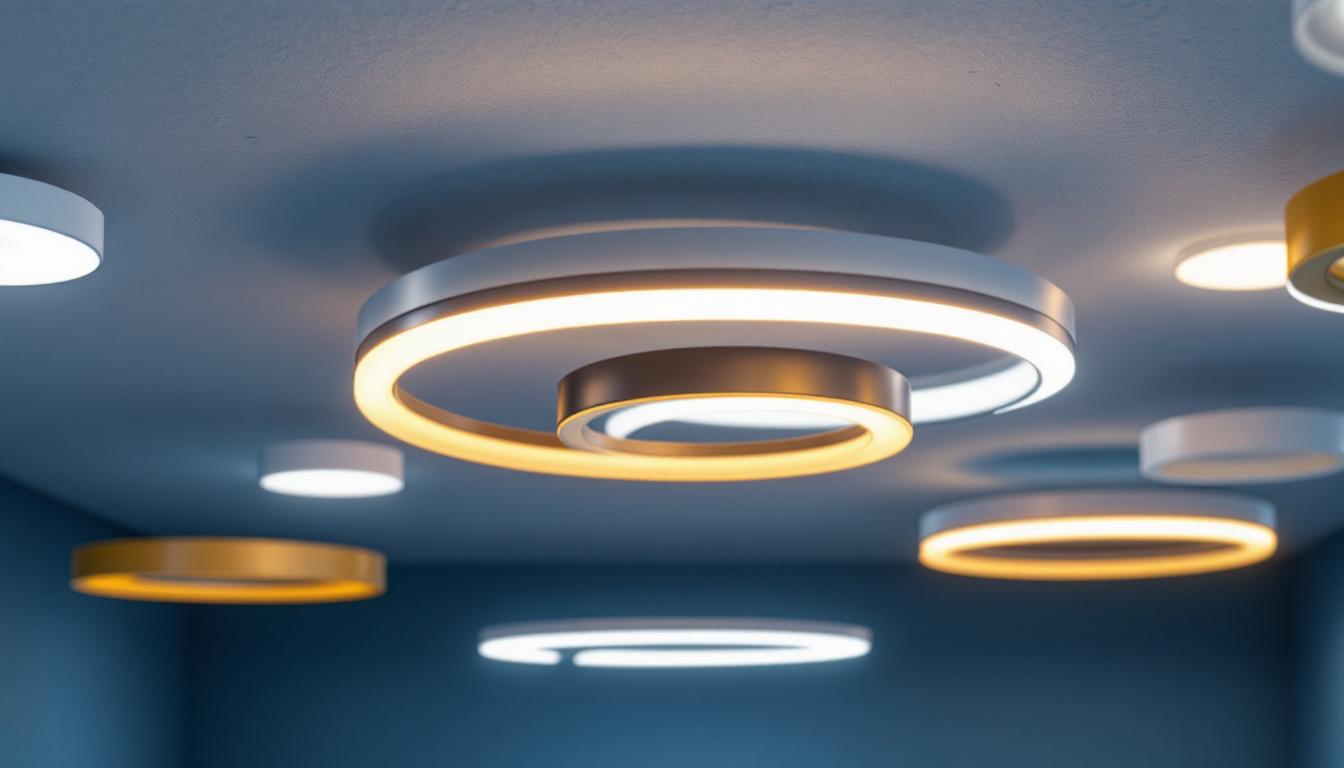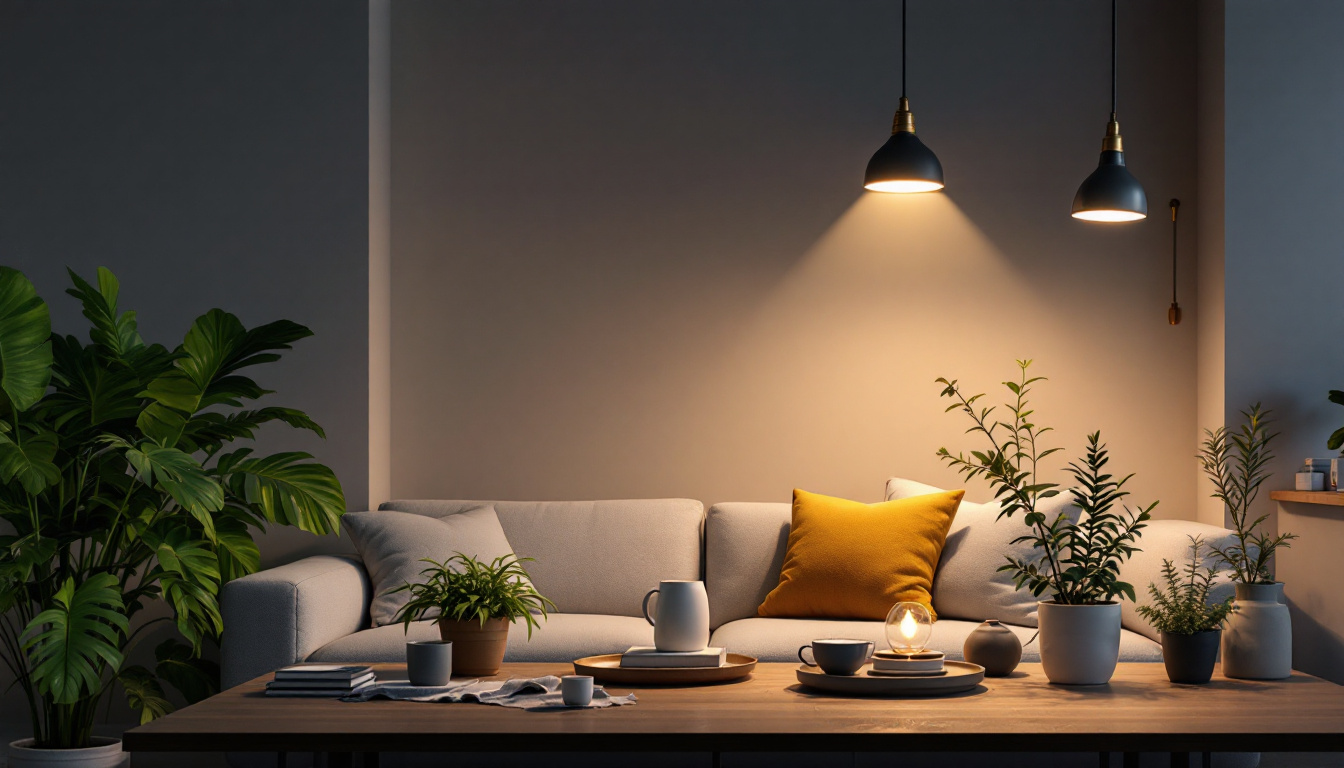
In the world of modern lighting solutions, flexible LED strip lights have emerged as a versatile and popular choice among lighting contractors. Their adaptability, energy efficiency, and ease of installation make them a favored option for various applications, from residential to commercial settings. However, to truly master the art of using these lights, contractors must understand their features, benefits, and the best practices for installation and maintenance. This comprehensive guide will delve into the secrets of flexible LED strip lights, equipping lighting contractors with the knowledge they need to excel in their projects.
Flexible LED strip lights consist of a series of light-emitting diodes mounted on a flexible circuit board. This design allows them to bend and conform to various shapes and surfaces, making them ideal for creative lighting solutions. Their versatility extends to a wide range of applications, including accent lighting, task lighting, and decorative lighting. Whether illuminating a kitchen countertop or adding a touch of flair to a retail display, these lights can transform any environment with ease.
One of the standout features of flexible LED strip lights is their low-profile design. This characteristic makes them suitable for installation in tight spaces where traditional lighting fixtures may not fit. Additionally, they are available in various color temperatures and brightness levels, allowing contractors to customize the lighting to meet specific project requirements. For instance, warmer tones can create a cozy atmosphere in residential settings, while cooler tones are often preferred in commercial spaces for a more modern and professional look.
Another notable feature is their energy efficiency. LED technology consumes significantly less energy compared to incandescent or fluorescent lights, resulting in lower electricity bills and a reduced carbon footprint. Moreover, flexible LED strip lights have a long lifespan, often lasting up to 50,000 hours or more, which translates to fewer replacements and maintenance efforts. This longevity not only benefits the environment but also provides a cost-effective solution for both homeowners and businesses looking to invest in sustainable lighting options.
There are several types of flexible LED strip lights available on the market, each designed for different applications. The most common types include:
Understanding the differences between these types will help contractors choose the right strip for their projects, ensuring optimal results and client satisfaction. Additionally, some strips come with adhesive backing, making installation even more straightforward, while others may require mounting clips for added security. Furthermore, advanced options like smart LED strips can be controlled via mobile apps or voice commands, allowing users to adjust brightness and color with ease, adding another layer of convenience and innovation to modern lighting solutions.
Proper installation is crucial for maximizing the performance and longevity of flexible LED strip lights. Here are some essential techniques that lighting contractors should consider when installing these lights:
Before installation, it is vital to prepare the surface where the LED strip will be mounted. The surface should be clean, dry, and free from dust or debris. For optimal adhesion, contractors may consider using isopropyl alcohol to wipe down the area. This step ensures that the adhesive backing of the strip adheres properly, preventing it from peeling off over time.
Flexible LED strip lights require a compatible power supply to function effectively. Contractors must calculate the total wattage of the strips being used and select a power supply that can handle the load. It is generally recommended to choose a power supply with a capacity that exceeds the total wattage by at least 20% to accommodate any fluctuations in power consumption.
Flexible LED strips can be cut to fit specific lengths, but it is essential to cut them at designated points marked on the strip. These points are typically located every few inches and are designed to ensure that the electrical connections remain intact. After cutting, contractors should use appropriate connectors or soldering techniques to join the strips, ensuring a secure and reliable connection.
Flexible LED strip lights offer limitless possibilities for creative lighting solutions. Here are some innovative applications that lighting contractors can explore:
Accent lighting is an excellent way to highlight architectural features, artwork, or decorative elements in a space. By strategically placing flexible LED strip lights along shelves, under cabinets, or around artwork, contractors can create a stunning visual impact that enhances the overall ambiance of the room.
In workspaces such as kitchens, offices, or workshops, task lighting is essential for providing adequate illumination for specific tasks. Flexible LED strip lights can be installed under cabinets or along work surfaces, ensuring that the area is well-lit and functional. Their adjustable brightness levels also allow users to customize the lighting to their preferences.
Flexible LED strip lights are not limited to indoor applications. They can also be used for outdoor lighting solutions, such as illuminating patios, decks, or garden paths. When selecting outdoor strips, contractors should ensure they are rated for wet or damp locations to withstand the elements.
While flexible LED strip lights are known for their durability, regular maintenance is essential to ensure optimal performance. Here are some tips for maintaining these lights:
Contractors should periodically inspect the LED strips for any signs of wear or damage. This includes checking for flickering lights, discoloration, or sections that may have stopped working. Identifying issues early can prevent more significant problems down the line.
Dust and debris can accumulate on LED strips over time, affecting their brightness and performance. A gentle cleaning with a soft, dry cloth can help maintain their appearance and functionality. For more stubborn grime, a damp cloth with mild soap can be used, but care should be taken to avoid moisture getting into the electrical components.
When faced with common issues such as flickering or dimming lights, contractors should first check the power supply and connections. Loose connections or inadequate power can often lead to these problems. If the issue persists, it may be necessary to replace the affected section of the strip or consult the manufacturer for further assistance.
As the world increasingly focuses on sustainability, flexible LED strip lights offer a compelling solution for energy-efficient lighting. Their low energy consumption not only reduces costs for clients but also contributes to a greener environment. Here are some key points regarding their energy efficiency:
Flexible LED strip lights consume significantly less energy compared to traditional lighting options. This reduction in energy usage translates to lower electricity bills for clients, making them an attractive option for budget-conscious consumers. Additionally, the long lifespan of LED lights means fewer replacements, further reducing waste.
By choosing energy-efficient lighting, contractors can help clients reduce their carbon footprint. LEDs produce less heat and contain no harmful substances like mercury, making them a safer and more environmentally friendly choice. Promoting these benefits can enhance a contractor’s reputation as a responsible and eco-conscious professional.
Effective communication with clients is essential for ensuring satisfaction and understanding of flexible LED strip lights. Here are some strategies for educating clients about their options:
When presenting flexible LED strip lights to clients, contractors should highlight their benefits, such as energy efficiency, versatility, and aesthetic appeal. Providing examples of previous projects can help clients visualize how these lights can enhance their spaces.
Educating clients about the maintenance required for flexible LED strip lights is crucial. Providing guidelines on cleaning and troubleshooting can empower clients to take care of their lighting systems, ensuring they remain functional and visually appealing for years to come.
Flexible LED strip lights come in various colors, brightness levels, and configurations. Contractors should discuss customization options with clients to tailor the lighting to their specific needs and preferences. This personalized approach can lead to increased client satisfaction and repeat business.
Flexible LED strip lights represent a dynamic and innovative lighting solution that lighting contractors can master to elevate their projects. By understanding their features, installation techniques, and creative applications, contractors can provide clients with exceptional lighting experiences. Furthermore, emphasizing energy efficiency and sustainability will not only benefit clients economically but also contribute to a healthier planet.
As the demand for flexible LED strip lights continues to grow, staying informed about the latest trends and technologies in the industry will be essential for lighting contractors. By embracing these secrets and best practices, contractors can position themselves as experts in flexible LED lighting, ensuring success in their projects and satisfaction for their clients.
Ready to harness the power of flexible LED strip lights and give your clients the efficiency and elegance they deserve? At LumenWholesale, we’re committed to providing you with the highest quality, spec-grade lighting products at prices that can’t be beaten. Say goodbye to local distributor markups and hello to our extensive selection that meets rigorous industry standards. With free shipping on bulk orders, you can stock up on premium lighting solutions without worrying about hidden fees. Elevate your lighting projects with the unbeatable value and convenience of Wholesale Lighting at the Best Value from LumenWholesale.

Discover how solar outdoor pole lights are revolutionizing the lighting industry by enhancing efficiency and sustainability for contractors.

Discover how exterior wall LED lights can boost your lighting project efficiency by up to 30%.

Discover the essential guide to ceiling light trim rings tailored for lighting contractors.

Discover how can lighting fixtures can transform your space and elevate your lighting projects to new heights.